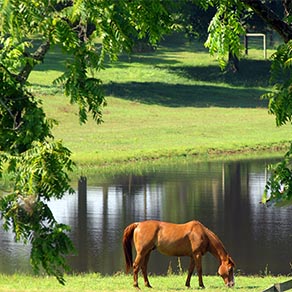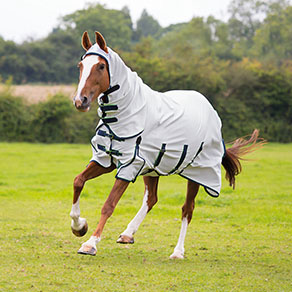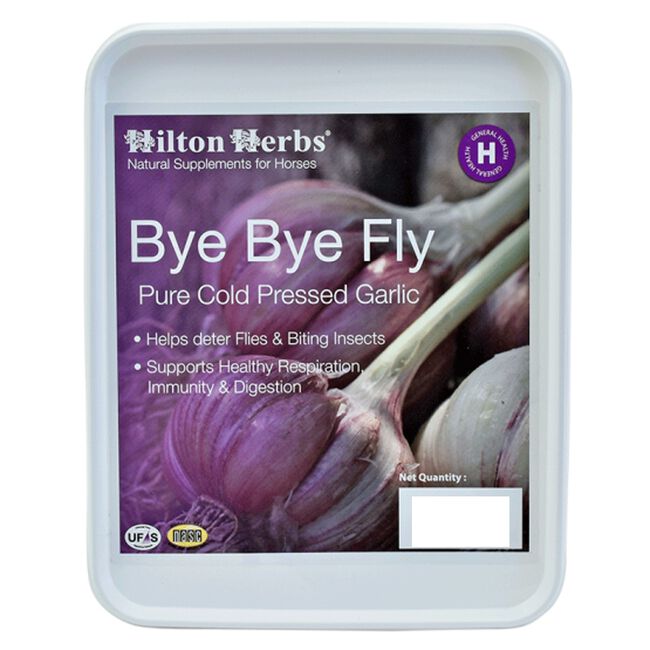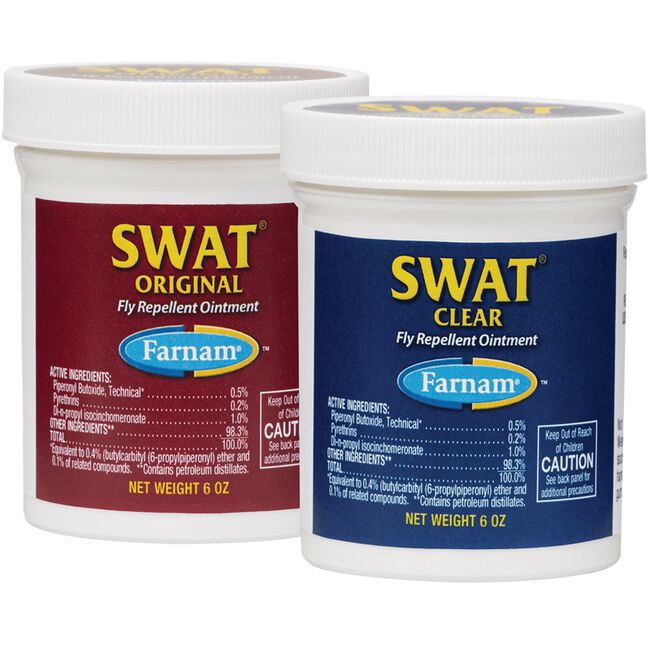
In the summer months, Sweet Itch, also known as summer itch, seasonal allergic dermatitis, or summer seasonal recurrent dermatitis (SSRD), can wreak havoc on your horse’s coat, tail, and mane while also making them highly itchy and uncomfortable. This irritating condition is actually an allergic reaction to the bites of small insects such as midges or gnats (as well as deer flies and black flies) and is most common during the summer months while the gnats are most active… However, it can begin as soon as early April when the midges begin to hatch. In this blog post, we break down the ways that you can help prevent your horse from developing Sweet Itch, while also giving you some practical ways to soothe the miserable skin condition after it has happened.
What is Sweet Itch?
Simply speaking, Sweet Itch is a hypersensitivity to certain insect bites. The saliva of the insects, most commonly the Culicoides midge biting gnat (also known as no-see-ums), causes itching and painful irritation wherever they bite your horse. These gnats are the most active during the dawn and dusk hours, throughout the months of April to October. It takes 48-72 hours after the gnats have bitten your horse for the painful irritation to begin. The allergic reaction on the skin can appear anywhere, but typically, these bugs bite along the mane, withers, back, belly, and tail head of your horse. The irritation can cause your horse to become extremely itchy, often looking for trees, fence posts, walls, the ground, etc. to scratch and rub against to find relief.
The early stages of Sweet Itch are simply red and inflamed skin, but it quickly irritates your horse which causes your horse to scratch the affected area. The itching, combined with the skin reaction to the saliva, often causes patches of hair and/or mane and tail to fall out, leaving your horse with areas of reddened, hardened, raw, sometimes oozing skin. The bare skin attracts more gnats, which in turn, makes the condition worse. This is known as the Sweet Itch cycle. In extreme cases, the skin will become extremely rough and calloused from all of the biting, itching, and scratching that is occurring — this may prevent the hair from growing back, even in the winter months when the gnats are not biting! In chronic cases of Sweet Itch, the skin becomes extremely hard, black, and wrinkled, with no hair. This is not only unsightly, but it is also painful for your horse, especially under blankets or tack. Typically, the reaction to the saliva worsens with each following year, making it so that your horse suffers more each summer.
Preventing Sweet Itch
When it comes to Sweet Itch, the best way to keep your horse comfortable is to prevent it from ever happening in the first place. This means you must discourage small biting insects from snacking on your horse using several pest control techniques.
Many equestrians find that the barrier method of fly protection is one of the most successful ways to combat Sweet Itch. By utilizing fine mesh fly sheets with neck covers, tail covers, and belly protection, often known as Sweet Itch sheets, you can physically prevent flies from being able to land on and bite your horse. If you are trying to protect your horse from Sweet Itch, it is important to select a sweet itch-specific fly sheet with a small, more tightly woven mesh. This is because the gnats are so tiny that they can often crawl through the more open mesh of traditional fly sheets (no-see-ums are as small as 1/16 of an inch long). The technical sweet itch mesh fabric still allows the air to circulate and keep your horse cool during the hot summer months. Consider keeping the fly sheet on your horse during the peak hours for bugs, including early morning and dusk to thoroughly protect your horse. If your horse is turned out overnight, you may find it beneficial to also leave your horse covered during the evening hours as well.
Fly sheets that are designed to combat sweet itch, like the Shires Sweet-Itch Combo Fly Sheet, the Horze Sweet Itch Fly Protection Blanket, and the Bucas Sweet Itch X Sheet, provide extra protection over the mane, belly, and the tail head, in order to minimize the likelihood of the gnats being able to bite these sensitive areas. To provide full barrier protection for your horse, look for fly masks, such as the Shires Deluxe Fly Mask with Ears and Nose and the Horze Eczema Mask, as well as fly boots, the Horseware Ireland Rambo Tech-Fit Fly Boots, for example, to truly protect your horse from head to hoof.
Utilizing high-quality fly spray is another way to keep the gnats at bay. However, many commercial fly sprays can irritate sensitive skin. If your horse has a sensitivity to fly spray (breaks out in hives, for example), try spraying the fly sheet thoroughly prior to putting it on your horse. This will provide the repellent properties that your horse needs while keeping the potentially irritating spray away from your horse’s skin. Some equestrians have had excellent results with natural fly spray options, like Equiderma Neem & Aloe Natural Fly Spray or Manna Pro Nature’s Force Fly Spray, with some horses finding them to be more gentle on their skin. Oil-based sprays and wipe-on formulas can be highly effective because the gnats tend to avoid the oily film that it creates — however, you will generally need to apply these a few times a day.
Others have found success with the skin oil for people, Avon Original Skin So Soft. This gentle oil moisturizes the skin, while also providing natural gnat and bug-repellent properties. The oil softens Sweet Itch patches, which helps them to heal, while also protecting against further damage. Some equestrians mix 1 part Skin So Soft Original Bath Oil, 1 part apple cider vinegar, and 1 part (or more) water to make a skin-soothing, fly repellent spray to nourish their horse’s skin and coat. Additionally, Skin So Soft Original Bath Oil can be mixed with equal amounts of Listerine Mouthwash to soothe the docks of the tail and stop horses from itching their tail head.

You should also take a look at the environment where you are keeping your horse. Ideally, the horse should be kept away from standing water, marshes, and wetlands, because these can all be breeding grounds for biting insects. You may find that you will need to change or fence off pastures during certain times of the year to limit the amount of biting insects that could bombard your horses. Additionally, stringent manure management practices can help to decrease the fly population in the paddocks and stalls. Fly predators are another popular way to cut down on the number of biting insects on the property; you can learn more about this all-natural form of fly control in our blog post, A Natural Approach: Understanding Fly Predators.
If your horse is often in their stall, or if they frequently have access to a run-in shed, utilizing box fans can also be a very helpful strategy. Not only will they keep your horse cool and comfortable, but the moving air also discourages the tiny “no-see-ums” from entering your horse’s area, because they have difficulty flying if the air is not still. Be sure to look for fans that are rated for stable use, such as the Schaefer F5-24 Versa-Kool 24″ High-Velocity Livestock Circulation Fan or the Lasko 20-Inch 3-Speed Box Fan (some other fans have been shown to be a fire hazard). Utilizing a fan hanger, like the Gatsby Nylon Box Fan Holder or the Weaver Telescoping Fan Hanger, can make it convenient to hang the fan in your horse’s stall, run-in shed, or the barn aisle. Consider keeping your horse in a stall with a fan during the high-activity hours for midges, the early morning and at dusk.
For added protection, consider integrating a feed-through fly control supplement to limit the fly population and make your horse less attractive to the biting insects. Supplements with garlic as an active ingredient, like the Hilton Herbs Bye Bye Fly Garlic Granules and the HorseTech Buggzo!, deter the flies from biting and swarming around your horse. Additionally, garlic can have positive effects on your horse’s immune system and digestive system.
Soothing Strategies
Once your horse has developed Sweet Itch, there is really no cure, however, there are ways to soothe the condition and keep your horse more comfortable while the skin irritation heals. Address the Sweet Itch as soon as you notice symptoms because just a few days of heavy itching can thoroughly damage the mane, tail, and coat of your horse.
Be sure that you address the environmental factors, to keep the gnats at bay while you are helping your horse recover from the condition. If your horse has an extreme case of Sweet Itch, it may behoove you to keep them in a stall with a fan during the day and only turn them out at night with a fly sheet when the flies are less active.
To begin the treatment of Sweet Itch, wash the affected areas with a medicated shampoo, Vetericyn FoamCare Equine Medicated Shampoo and Coat Defense Clean Shampoo are popular options. These shampoos cleanse the area while killing off any bacteria that could potentially cause an infection. Follow the directions for washing your horse, then allow your horse to dry completely. Keeping them under a fan during the drying process will not only help them dry faster, but will also ensure that they are not being bitten by flies, midges, and gnats as you are trying to treat the condition.
After the area is completely dry, the next step is to apply a protective and soothing fly control ointment, such as Coat Defense Equine Daily Preventative Trouble Spot Paste, Farrier’s Wife Equine Belly Salve, or Farnam SWAT Fly Repellent Ointment. This will prevent the flies from continuing to irritate the area while helping it to heal. If your horse becomes increasingly uncomfortable, or you do not notice any improvement, you will want to consult with your veterinarian. They may prescribe your horse an ointment with antihistamines and/or corticosteroids to control the itching and inflammation. Depending on the severity of the Sweet Itch, you may want to work with your veterinarian to determine which type of fly(flies) your horse is allergic to so that you can treat them appropriately.
In addition to cleansing and treating the area, omega-3 supplements and MSM supplements have been shown to be beneficial for horses with Sweet Itch. These supplements promote a healthy coat and skin, which in turn, helps to heal the Sweet Itch patches. They can also help your horse to regrow their mane, tail, and coat, although this can be a bit of a longer process. If your horse is prone to Sweet Itch, consider keeping them on a supplement, such as Omega Fields Omega Horseshine Complete or Ker Eo-3 Omega-3 Supplement, year-round.
The fact is… Sweet Itch is anything but sweet! This irritating and distressing condition can make summer difficult for many horses, but with the right preventative measures and management practices, you can keep your horse as comfortable as possible.




